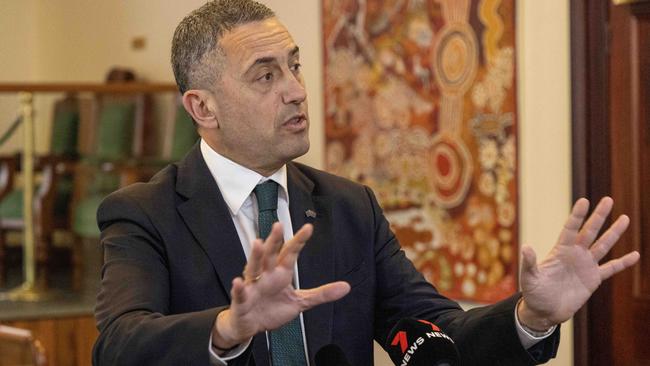Analysis: Speed up Adelaide’s growth – don’t cut speed limit to 30km/h in the CBD | Paul Starick
Imagine if Adelaide’s councils spent as much time on creative ideas as they do on thought bubbles like these, writes Paul Starick.
Opinion
Don't miss out on the headlines from Opinion. Followed categories will be added to My News.
Adelaide councils seem unduly obsessed with changing speed limits in a myopic power grab that risks stifling their communities and encouraging rat-running.
Traders, residents and commuters understandably have lashed an Adelaide City Council proposal to slash the CBD speed limit to a dawdling 30km/h.
Just to the south, Unley Council in 1999 was the first in Australia to introduce 40km/h speed limits across its entire local street network.
Now, it wants to lower the speed limit on 10 remaining council-owned 50km/h collector roads to 40km/h. These include: Leader St, Wayville; Duthy St, Malvern; and the prestigious Victoria Ave, Unley Park.
Having driven to and from work in Adelaide’s CBD from suburbs to the north, west and south for most of the past 30 years, I can assure councils that the road network is already grinding to a halt without their intervention.
TELL US MORE IN THE COMMENTS

As Transport Minister Tom Koutsantonis warned a year ago, the absence of a non-stop road corridor, like the planned $15.4bn Torrens to Darlington motorway, to move traffic away from Adelaide’s grid network is causing peak-hour chaos.
“People are rat-running and they’re rat-running at a rate now that is causing Marion Rd, Brighton Rd, Unley Rd, Goodwood Rd and any other parallel suburban road to grind to a halt,” he said.
At the time, Mr Koutsantonis said traffic was slowing to an average 20km/h during peak hour along the existing South Rd corridor.
Lord Mayor Jane Lomax-Smith, one of the state’s more talented politicians, correctly cites the competing arguments of people’s convenience versus road safety research showing a 30km/h limit reduces the risk of pedestrian fatalities.

But cutting the limit to the same top speed as an elite human sprinter also greatly risks reducing the number of pedestrians in the city in the first place.
Adelaide’s CBD, in particular, was smashed by the Covid-19 pandemic as city workers seized on work-from-home arrangements. Anecdotally, it has yet to recover. This observation is supported by Property Council office vacancy figures of 17.5 per cent – higher than pre-Covid levels.
Even Dr Lomax-Smith just 18 months ago branded Adelaide’s showpiece King William St “a disgrace”, declaring the CBD’s central artery was “in a really shocking state”, “an embarrassment” and the “least well-maintained street that I have ever seen”.
Walking along King William St every working day, there’s not much evidence of any substantial change since then – other than the scaffolding covering the Town Hall during restoration work and the fine Adelaide Marriott Hotel.
Like it or not, Adelaideans still want to be able to drive into the city and find a park, before shopping, eating out or visiting cultural attractions.
Adelaide does not have the underground metro of a London or Paris, where vehicle entry is restricted in a low-emission zone.
Dare I say if councils are so worried about speed limits, perhaps they could try enforcing the existing ones – the present regime seems lax.
City councillors should listen to the people who pay their rates and fund their precarious budget, which can ill-afford frivolous spending on needless studies into speed limit changes.

Ratepayers like Ben Kelly, the owner of the General Havelock Hotel on Hutt St, where the speed limit would reduce to 30km/h under all three options being considered by the council.
“We’re trying to bring back (Hutt St) and make it more vibrant. We’re trying to bring more people into the city. This city is trying to grow. Reducing speed limits (will) create further congestion within the city. It’s ridiculous,” he said.
Adelaide should be looking to build on the vibe of events like Gather Round and the Supercars race, to attract people into the CBD all year round.
A capital city council should have a creative agenda to speed up growth of investment, cultural activity and population – not to wind cars back to a crawl and ringfence the CBD for the enjoyment of a select few
More Coverage
Read related topics:Gather Round





